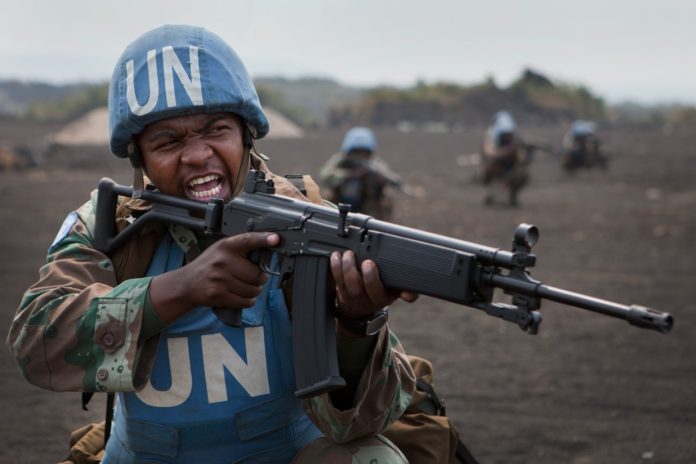Introduction
This article is the first of what will be a wider “Understanding” series aimed at providing the history behind and context to the worlds ongoing conflicts and issues, in order to increase your understanding of modern world issues.
This article goes over the history of the Democratic Republic of Congo’s (DRC) M23 rebels, one of the largest and most significant armed groups that operates within the DRC.
The March 23rd Movement
The March 23rd movement, often abbreviated to the M23, was originally founded in April 2012 as a rebellion of Congolese military soldiers against the government. Initially, the group was created after General Bosco Ntaganda, along with approximately 300 other Congolese soldiers, defected from the military. The majority of those who defected were former members of the National Congress for the Defence of the People (CNDP), which was a political militia which operated in the DRC from 2006-2009. Following a peace deal signed on March 23rd 2009 (the date of signing of this peace treaty is where the M23 gets its name), the militia transitioned to a political party, and the troops led by General Ntaganda were to be integrated into the Congolese military.
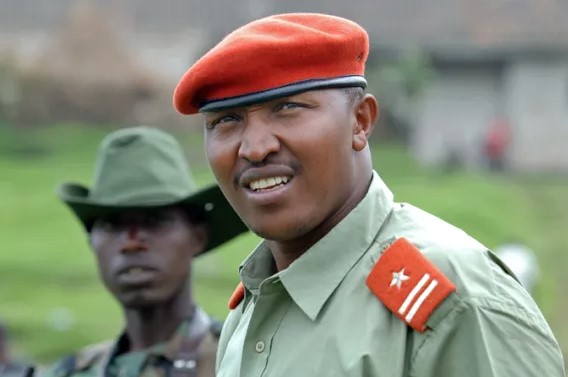
The soldiers who defected cited poor conditions in the Armed Forces of the Democratic Republic of the Congo (FARDC), as well as what they called the “obvious failure of the integration of elements of political-military movements into the Congolese armed forces” in regards to the March 23rd treaty.
In the the years between the signing of the 2009 treaty and Ntaganda’s 2012 rebellion, the former CNDP troops were able to operate under their own chain of command, which was headed by Ntaganda, who had been made a General in the FARDC. During this time, the group of ex-CNDP soldiers controlled a number of smuggling routes and taxation rackets. They also maintained control over several natural resource sites, such as gold mines.
Nearing the 2012 rebellion, pressure had been growing to not only break up the ex-CNDP’s independent chain of command, but also to arrest Ntaganda. The General had an arrest warrant issued against him by the ICC, the International Criminal Court, for charges of war crimes including (but not limited to) murder, rape, sexual slavery (including of children), and use of child soldiers. Ntaganda received the nickname “the Terminator” for his ruthless reputation.
The ICC’s warrant had existed since the signing of the 2009 peace treaty, however as time went on international calls and pressure for his arrest increased.
Attempted FARDC crackdowns on the group, and mounting pressure for Ntaganda’s arrest, resulted in the initial split from the FARDC on the 4th of April 2012, the start of the M23 Rebellion.
Armed Rebellion
When the M23 Rebellion began, they made enemies of several different groups. Of course the primary one being the FARDC, however, with the group being predominantly Tutsi, they also made enemies of the Democratic Forces for the Liberation of Rwanda (FDLR), and the Mai-Mai, which are community led militias around the DRC which are supported by the government. The M23 began in and continues to operate today in primarily the North Kivu province of the DRC.
The FDLR is a militant group in the DRC which was initially founded by former Interahamwe, the perpetrators of the Rwandan Genocide, who had escaped to the DRC following the Rwandan Patriotic Front’s capture of the country, which ended the genocide. Both Rwanda and the M23 have accused the FARDC of working and fighting alongside the FDLR, which the DRC has denied.
After the initial rebellion in April, the M23 rebels quickly saw a significant number of military successes, having been able to seize several of North Kivu’s key towns. The rebellion escalated drastically when the M23 managed to capture Goma, the capital of North Kivu and a city of over 1 million, from it’s FARDC and UN (under MONUSCO, the UN’s mission in the DRC) defenders in November of 2012.
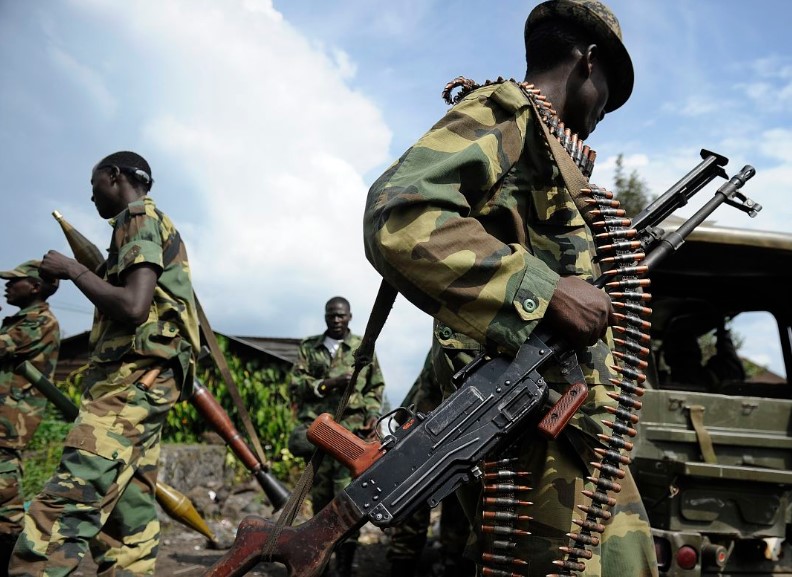
Following the M23’s capture of Goma on November 20th, they experienced a recruitment surge as nearly 3,000 FARDC soldiers and Congolese police defected and joined the M23 rebels. The rebellion then spread into South Kivu, as they announced intention to overthrow the central government.
Despite their military successes, and a failed FARDC counterattack to retake the city, ceasefire negotiations began which were initially mediated primarily by Uganda. The negotiations lead to the M23 withdrawing from Goma on the 1st of December, 2012, to their positions they’d held before their capture of the city.
Temporary Peace
Following the initial December ceasefire, on February 24th, 2013, a peace agreement was signed between 11 different African countries, aimed at bringing about an end to the violence plaguing the eastern DRC. The agreement, which called for a series of reforms within the DRC, strengthening of government, and increased cooperation with the DRC’s neighbours as well as assistance from other nations in reforming specific DRC organizations (with the understanding that these nations would not interfere with internal DRC affairs).
In March of 2013, Ntaganda surrendered himself in to the US Embassy in Rwanda, where he was arrested and transferred to the ICC. On July 8th, 2019, he was convicted of war crimes and sentenced to 30 years in prison, the longest sentence ever given by the ICC.
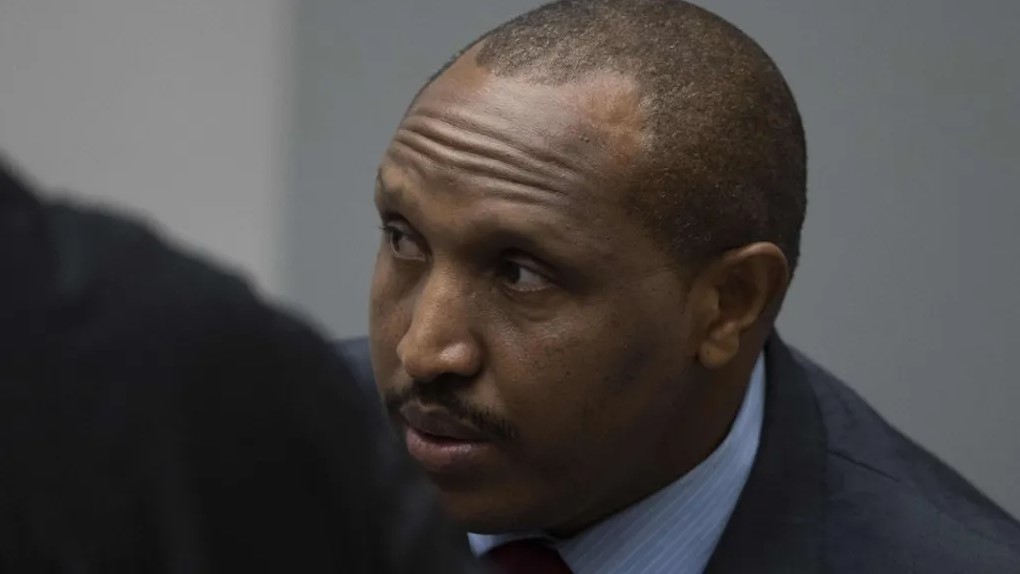
Following Ntaganda’s surrender, Bertrand Bisimwa became the President of the group. He still heads the M23 to this day.
The peace agreement only succeeded in creating a temporary peace, with clashes breaking out again in May, and then July. A series of FARDC and UN offensives were able to seize significant portions of territory from the M23. As the offensives began pushing the M23 into more and more unfortunate positions, Bisimwa began calling for a ceasefire.
The rebellion was officially ended on the 7th of November 2013, as the rebels began to demobilize and disarm. A final peace agreement was signed in Nairobi, Kenya, on December 12th between the M23 and the government.
The 2012-2013 rebellion displaced approximately 140,000 people.
Resurgence
In 2017, a splinter group of the M23 that had retreated to Uganda after the initial rebellion had ended, returned to the DRC and began its insurgency once more. The group was small, totaling only between 100-200 troops. In March of 2022 the splinter group launched further attacks which failed, but prompted renewed peace talks with the government. These talks broke down in April and fighting resumed, however this time the primary M23 group, headed by Bisimwa, join the conflict. It is alleged approximately 1,000 Rwandan soldiers joined the M23 in the renewed offensive.
The M23 again saw a series of military successes, which saw them reach the outskirts of Goma once more, however this time they were unsuccessful in taking the city. Since the resurgence of the M23 there have been a series of peace deals and ceasefires established, including several which had roadmaps to end the conflict once and for all. However, these have largely failed. While at the moment a ceasefire has technically been established, the rebels maintain significant positions within the DRC and clashes with the government happen semi-frequently.
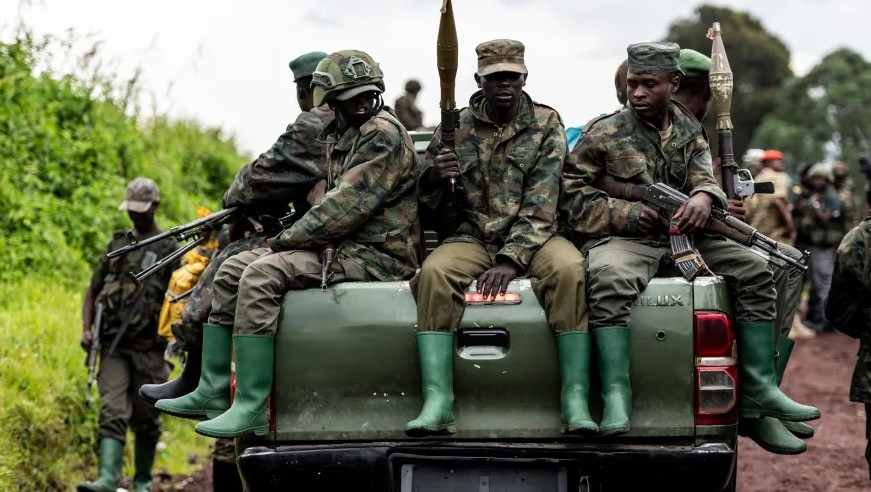
When fighting renewed in 2022, hundreds of thousands were again displaced.
2023 saw several periods of ceasefires and fighting. As a part of peace processes, the M23 withdrew from many different villages and towns. In the times of broken ceasefires, there were a handful of major engagements, in which the M23 took a few notable towns, however they were all later withdrawn from or lost to the FARDC.
Areas under control by the M23 were unable to participate in the DRC’s recent December 20th elections.
In December of 2023, the US negotiated a ceasefire between the M23 and the FARDC. This ceasefire was established as the East African Community Regional Force (EACRF) was on their way out of the country, and the Southern African Development Community’s (SADC) intervention force was on their way in.
The SADC deployed to the DRC with the stated purpose of fighting against the M23, as well as other militias in the area, and defeating them completely.
True to their word, the SADC and the FARDC began a joint offensive against the M23 on January 16th, 2024. The offensive began with a drone strike which assassinated two prominent M23 commanders, and was quickly followed by attacks on a number of M23 positions.
Le M23 a bien compris le message lui adressé par le régime de Kinshasa et y répondra de manière adéquate.
COMMUNIQUÉ OFFICIEL DU MOUVEMENT DU 23 MARS DU 17 JANVIER 2024 ?? pic.twitter.com/l4EtZISnvU
— Lawrence KANYUKA (@LawrenceKanyuka) January 17, 2024
The DRC’s offensive broke the US brokered ceasefire that had been enacted a month prior. While the offensive initially saw some minor successes, it quickly backfired. The M23 promptly launched a counter offensive, pushing the FARDC, SADC, and hostile militias back in several different areas. The renewed fighting quickly led to the displacement of tens of thousands more.
By early February, the M23 had pushed the FARDC back to the town of Sake, approximately 25km from Goma. Amidst this offensive, the M23 had seized every road that led to Goma; except for the road which Sake lies upon.
The town of Sake is of vital importance to the DRC, as losing it would mean they would have no land paths to read Goma (which sits on the coast of Lake Kivu), thus isolating the city.
In their initial assaults upon the town, the M23 claimed they did not intend to capture Goma, but merely to “silence” the heavy weapons in the area that they claim the DRC and SADC are using to kill civilians.
THE M23 MOVEMENT OFFICIAL COMMUNIQUE OF FEBRUARY 13, 2024
To our compatriots of SAKE to remain calm and to carry on with their businesses. The M23 is coming to liberate them and protect them from those heavy artillery, drones and combat tanks that are continuously killing Women,… pic.twitter.com/Q0sgCWWtbo
— Lawrence KANYUKA (@LawrenceKanyuka) February 13, 2024
As of May, fighting around Sake has largely reached a stalemate, as the M23 is unable to push to capture the town, and the FARDC has been unable to push the M23 out of the area. In other regions of North Kivu, the M23 has captured several significant towns, including Rubaya, a key mining town for coltan.
The EAC, as well as other regional bodies and foreign nations, have called for the reestablishment of peace processes, both between Rwanda and the DRC, as well as the M23 and the DRC. The DRC appears to be uninterested in establishing peace processes with the M23, though President Tshisekedi has agreed to meet with President Kagame in order to discuss ways of easing relations between the two countries. President Kagame has also agreed to join this meeting.
The meeting is to be hosted by Angolan President Joao Lourenco in Luanda, the Angolan capital.
Renewed fighting in 2024 has further displaced hundreds of thousands of people, the majority of which have fled to Goma. In addition to their population of two million, Goma is now host to several hundred thousand internally displaced persons (IDPs), who primarily reside in massive camps outside the city.
International Interventions
A number of international groups have been deployed in an attempt to either fight or contain the M23.
The East African Community Regional Force (EACRF) was deployed in November 2022 in order to assist in pacifying the region, however the mission quickly fell under scrutiny from the DRC government for failing to combat the M23. While the DRC government had wanted the EACRF to directly participate in combat against the M23, they instead fulfilled a more supervisory and peacekeeping role, oftentimes serving to simply secure and police areas the M23 had withdrawn from in the numerous peace deals that had been established during their deployment. Due to the DRC government’s dissatisfaction with the missions tactics, the EACRF’s mandate was not renewed, and the EACRF withdrew from the nation as of December 21st, 2023.

In it’s place, the Southern African Development Community (SADC) has deployed a military force to the DRC, which arrived on December 15th, 2023. The SADC vowed to fight alongside the FARDC against armed groups “to restore peace and security in the eastern DRC”. The SADC’s force consists of troops from South Africa, Tanzania (who notably was a part of the EACRF), and Malawi.
MONUSCO, the UN’s mission in the DRC, has also drawn anger from both the DRC government and populace for what they say is its ineffectiveness in solving the instability in the Eastern DRC, having been there since 1999. The DRC government has demanded the UN leave the country, and MONUSCO has began preparing for its withdrawal from the DRC. Initially the DRC had demanded that MONUSCO leave by the end of 2023, however the UN’s withdrawal will not be complete until a few months into 2024.
Accusations of Rwandan and Ugandan Support
In both the initial rebellion and their more recent resurgence, several international entities have accused both Rwanda and Uganda of supporting the M23. While both have been accused of supporting them, the alleged Rwandan level of support goes above and beyond that which Uganda is accused of. Uganda has been accused of providing material support to the M23.
Rwanda, on the other hand, has not only been accused of providing material (uniforms, weapons, etc) and financial support, but also of deploying undercover soldiers to fight alongside the M23.
The UN, UK, US, DRC, and several other nations have all accused Rwanda of supporting the M23, which they, and Uganda, have continually denied doing. When the M23 was originally founded, a UN “Group of Experts” report claimed that not only did Rwanda provide support to the group, but also had a hand in its creation.
The reports in 2012 that accused Rwanda of supporting the M23 saw both the US and the UK withhold financial and military aid from Rwanda.
Recently, after the M23’s resurgence, the UN has made another series of reports which once again detailed Rwandan support for the M23. In the various offensives the M23 has made, the UN noted specifically that the M23 was incredibly well equipped (so much so that they had been seen at times deploying night vision technology), and also very well disciplined. One such report can be read here.
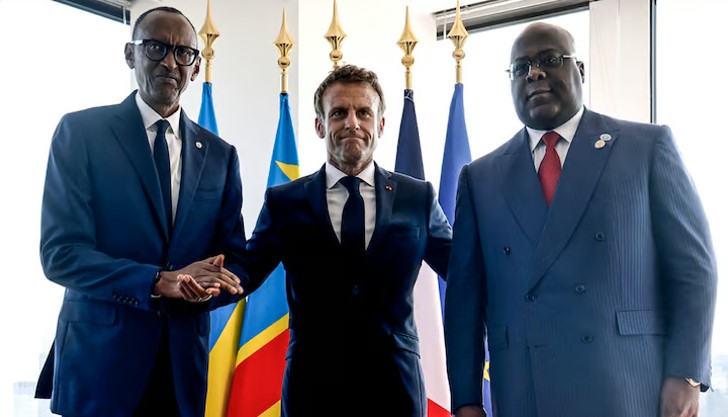
Notably, while the UN’s reports claim Rwandan support for the M23, they also claim that the FARDC does fight alongside the FDLR, which the DRC has denied.
Rwandan material support for the M23 has escalated since they began their counteroffensive in January. According to a UN report, the M23 has a Rwandan surface to air missile system in their possession. The UN discovered this system when it fired at one of their observation drones.
Rwanda has continually denied accusations of support for the M23, claiming that the DRC is attempting to use Rwanda as a scapegoat for why it is unable to solve it’s own issues. Tensions between Rwanda and the DRC have escalated drastically since the 2022 M23 offensives began, so much so that the UN has urged calm between the two nations as speculations grew that the two would head to war with each other. Oftentimes in peace talks and peace deals is included de-escalation steps between Rwanda and the DRC.
One of President Tshisekedi’s campaign promises for his reelection campaign in 2023 was that he would declare war on Rwanda should the alleged support continue.
“I’ve had enough of invasions and M23 rebels backed by Kigali. If you re-elect me and Rwanda persists … I will request parliament and Congress to authorise a declaration of war. We will march on Kigali. Tell Kagame those days of playing games with Congolese leaders are over” – President Felix Tshisekedi, prior to his win in the December 20th election
He has since abandoned this notion, and stated intentions to “give peace a chance.”
“The context in which we find ourselves does not allow us to put into practice what I had said. Not because I can’t or don’t want to, but because there are enough initiatives that make observing peace a wiser attitude” -President Tshisekedi, February 22nd, 2024
Also notable is that both Rwanda and Uganda participated in the First and Second Congo War’s (described as “Africa’s World War”) against the DRC.
Conclusion
While the M23 has made a significant impact on the security situation in the DRC, they are one of over 100 different armed groups which operate within the Eastern DRC. If the DRC and SADC are able to succeed in dismantling the group, the DRC will still have a long way to go before the situation is finally under control.


